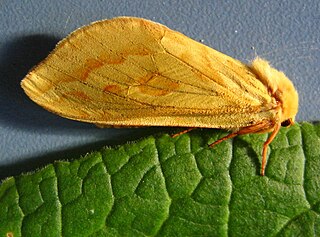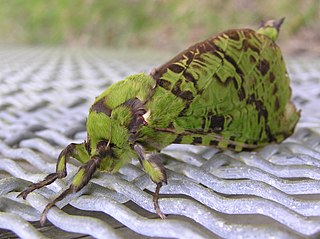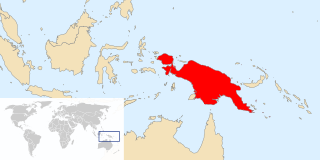
The ghost moth, also known as the ghost swift, is a moth of the family Hepialidae. It is common throughout Europe, except for in the far south-east.

Aenetus is a genus of moths of the family Hepialidae. There are 24 described species found in Indonesia, New Guinea, New Caledonia, Australia and New Zealand. Most species have green or blue forewings and reddish hindwings, but some are predominantly brown or white. The larvae feed in the trunks of living trees, burrowing horizontally into the trunk, then vertically down.
The Hepialoidea are the superfamily of "ghost moths" and "swift moths".
Fraus is a genus of moths of the family Hepialidae. There are 25 described species, all endemic to Australia.

Abantiades latipennis, known as the Pindi moth, is a species of moth in the family Hepialidae. It may also be referred to as a swift moth or a ghost moth, as this is a common name associated with Hepialidae. Endemic to Australia and identified in 1932, it is most populous in temperate rainforest where eucalypti are prevalent, as the larvae feed primarily on the roots of these trees. Females lay eggs during flight in a scattering fashion. The larvae live for over eighteen months underground, while adult moths survive for approximately one week, as they have no mouthparts with which to feed. The moths are preyed upon by a number of predators, including bats and owls. Brown in colour overall, males are paler and the identifying silver bars of the male's wings are more prominent than those of the female's, with dark margins. Male adults are generally smaller.
Afrotheora flavimaculata is a species of moth of the family Hepialidae. It is known from Angola.
Aplatissa michaelis is a species of moth of the family Hepialidae. It is endemic to Brazil.
Bipectilus omaiensis is a species of moth of the family Hepialidae. It is known from China (Szechuan).
Bipectilus unimacula is a species of moth of the family Hepialidae. It is known from China (Kiangsu).
Bordaia paradoxa is a species of moth of the family Hepialidae. It is endemic to Western Australia.
Dalaca pallens is a species of moth of the family Hepialidae. It is known from Chile and Argentina.
Gazoryctra macilentus is a moth of the family Hepialidae. It is known from Siberia, the Russian Far East, Japan, Kazakhstan and Mongolia.

Sthenopis pretiosus, the gold-spotted ghost moth, is a species of moth of the family Hepialidae. It was first described by Gottlieb August Wilhelm Herrich-Schäffer in 1856. It can be found in found Brazil, Venezuela and in the north-eastern United States and south-eastern Canada.
Sthenopis purpurascens, the four-spotted ghost moth, is a species of moth of the family Hepialidae. It was described by Packard in 1863. It is found in Canada and the United States, from Labrador and New York north and west to British Columbia and the Northwest Territories, south in the mountains to Arizona.

Wiseana cervinata, the porina moth, is a species of moth belonging to the family Hepialidae. It was described by Francis Walker in 1865 and is endemic to New Zealand.







